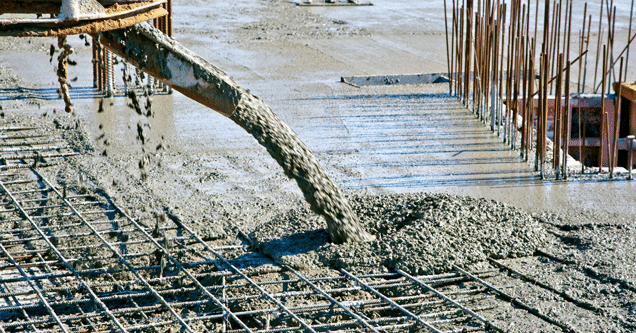
Mixing and pouring concrete is a simple enough process for the well-informed layman to conduct as a hobby, although it’s generally advisable to allow experienced professionals do the job when it’s an important aspect of erecting a structurally sound building. An architect is going to understand how and why concrete works as it does, but may not have experience with the actually application techniques in a job setting.
A general contractor with a different specialty is going to have a good understanding of working with concrete, but likely doesn’t have the same experience a professional concrete team who works with it every day. Regardless of which perspective you’re approaching your concrete project from, there are a few general rules to assure you become more efficient when working with concrete.
Tensile Strength of Concrete
The tensile strength of concrete is its resistance to pulling or twisting forces rather than it’s ability to bear compression loads. A bridge needs tensile strength as it bends under load or due to weather. A building foundation or concrete walls face tensile requirements as the building settles over time. The manufacturer determines tensile and compression strength using their cured product, on the job site a slump test is performed.
Essentially, filling a cup with the wet mix, turning it upside down, and removing the cup is how the slump test starts, then timing how long it keeps its shape determines the concrete is properly mixed according to whether strength or maneuverability is required of the project.
Using a Concrete Slab Calculator
Failing to determine the right amount of concrete by using a concrete slab calculator to mix or order can be a costly mistake for a concrete project. Too much is a mess to clean up, too little is going to require a second application which may not bond well or provide the strength of a single pour. The important aspect not necessarily to trust the plans, but measure the area after finishing the subgrade and adding the gravel and dirt as required. Don’t forget to account for the rebar, and understand the concrete is going to shrink as it cures and the water evaporates.
Choosing and Using a Concrete Saw
There are four main types of concrete cutting saws, each with their own set of advantages for different applications. A walk behind saw is the most powerful and accurate, able to perform cuts quickly with minimal stress on the user for all day cutting tasks. A handheld cutting edge saw is designed for finishing work around edges and can easily cut through the concrete’s rebar reinforcements. Wet saws spray water on the cut, keeping dust down for better visibility and control over the cut. A diamond blade is not exactly the saw itself, but essential for making clean cuts which are going to show when the job is finished.
Proportions for Mixing Concrete
Typical concrete proportions are four parts aggregate, two parts sand, and one part cement. The proportions can change for specific applications, more cement adds adhesiveness, more sand allows for better forming, more aggregate makes a stronger concrete. The rule for water is to use as little as possible to hold everything together, or a bit more as needed for maneuverability if the project has curves or corners in a tight space.
Becoming more efficient with your work with concrete helps your overall production bottomline and team safety. If you’re looking for quality tools to use when working with concrete, contact us or view our products online or at one of our Distributors.




